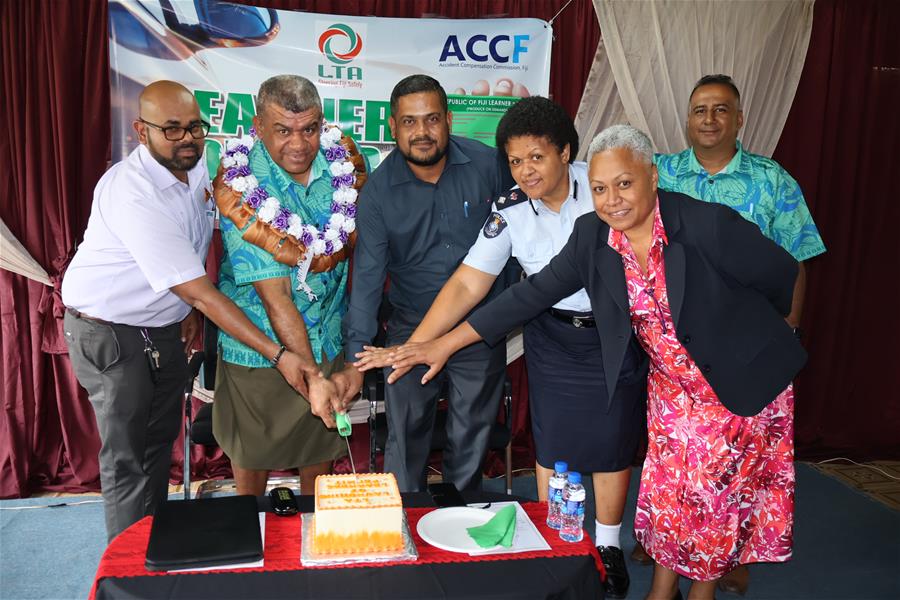SUVA, Fiji (14th August 2025): The Land Transport Authority (LTA), in collaboration with the Ministry of Education, has officially launched the Learner Driver Training Program for Year 12 and Year 13 students across Fiji secondary schools.
The official launch took place today at Suva Muslim College, in Suva, marking a significant step towards building a new generation of safe, responsible, and well-informed drivers.
LTA Chief Executive Officer Irimaia Rokosawa said the program focused on shaping young drivers’ attitudes as much as their technical skills.
He said the program aimed to empower youth with the competence and mindset needed to make Fiji’s roads safer for everyone.
“This program is specifically designed for our Year 12 and Year 13 students, young people who are in the age bracket eligible to obtain their Learner’s Permit,” Mr Rokosawa said.
“But beyond the process of getting that permit, this training is about instilling a deeper understanding within each of you of what it truly means to be a driver and to be given a driver license.
“Driving is a privilege that comes with great responsibility because of the biggest risk it carries on our roads – life which is why it’s crucial to instill road safety awareness from a very young age.”
He stressed that driving is not merely a convenience but a privilege that carries immense responsibility.
“The moment you are given that privilege, that driver license, to sit behind the wheel, you are not only responsible for your own safety but for the lives of your passengers, pedestrians, and every other road user,” Mr Rokosawa said.
The CEO also expressed concern about the high number of accidents involving inexperienced drivers.
“Sadly, too many of the tragedies we see on our roads are the result of reckless driving and a lack of appreciation for this responsibility — even among Learner drivers and young drivers who choose to get behind the wheel without a valid licence or proper training and understanding of road safety rules and regulations.
“Through this program, we aim to equip the students with the skills, awareness, and respect for the road that will serve you for life,” he said.
Mr Rokosawa said the Authority, together with its stakeholders, will continue to vigorously promote compliance with road safety rules and traffic regulations, as their ultimate goal remains clear and unwavering — to save lives.
“To you, our next generation, I encourage each of you to take this opportunity seriously, learn diligently, and commit yourselves to being safe, responsible drivers from the very beginning of your driving journey,” he said.
The Learner Driver Training for Year 12 and Year 13 students will be conducted during their scheduled career classes, where they will learn about obtaining a Learner’s Permit and progressing to a Provisional License.
Students will also learn road signs and rules, the Driver Knowledge Test (DKT), an overview of the practical driving test, and safe driving habits that are essential for responsible road use.
LTA Manager Road Safety Education Watilala Fonu said the program was a milestone in preparing young people for the realities of the road.
“We want our students to see this as more than a box-ticking exercise to get their licence,” she said.
“It’s about understanding the responsibility that comes with driving and the potential consequences of unsafe behaviour behind the wheel.”
She explained that the curriculum was designed to be practical and engaging.
“From understanding the documents needed for a Learner’s Permit, to decoding every road sign, to preparing for the DKT — we’re giving students the tools to succeed,” Ms Fonu said.
“Every choice you make on the road — from wearing a seatbelt to following the speed limit — can be the difference between life and death.
“This program is about giving young drivers the confidence to make the right decisions, even in challenging situations.”
